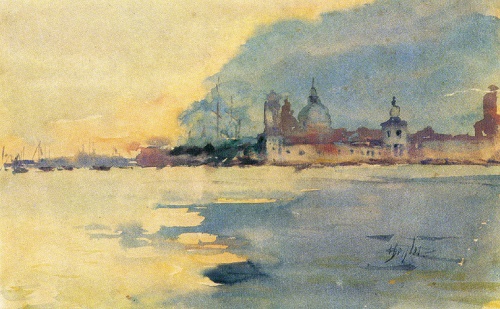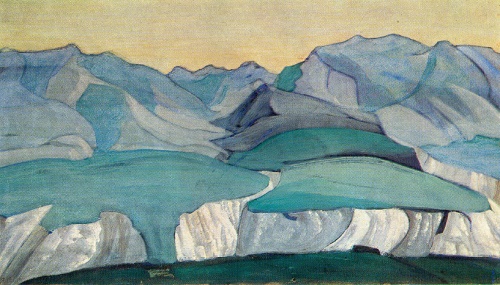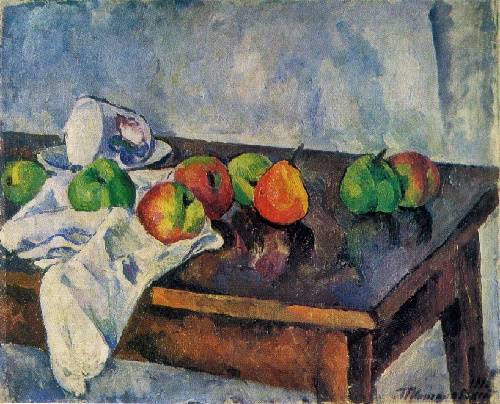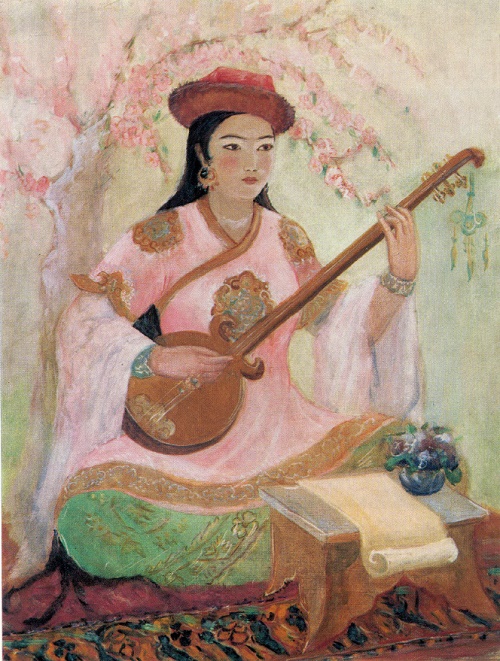Tashkent art museum of Soviet Uzbekistan

Alexander Nikolayev (Usto Mumin). 1897-1957. Dutar player. 1920s. Tempera on panel. Tashkent art museum of Soviet Uzbekistan
Tashkent art museum of Soviet Uzbekistan
Today the Tashkent art museum boasts an excellent collection of Russian paintings. The inimitable originality of eighteenth century portraiture is reflected in the works of А. Antropov, D. Levitsky, F. Rokotov and V. Borovikovsky. Besides, there аге portraits and urban landscapes created by unknown artists of the eighteenth and early 19th centuries. The material amassed in the Museum gives ап idea of the diversity of themes and the depth of insight into life characteristic of early nineteenth century Russian artists, as well as of the development of genre, landscape and portrait painting in the 19th century.

Abdulkhak Abdullayev. Born 1918. Portrait of A. Khidoyatov, People’s artist of the USSR. 1946. Oil on canvas
The landscapes of I. Shishkin, F. Vasilyev, А. Savrasov and I. Levitan, all of whom were Peredvizhniki – members of the Society for Circulating Art Exhibitions, occupy а prominent place in the Museum’s exhibition. The picture Mill in the Forest by I. Shishkin is interesting in that it was done in 1897 when the artist was particularly attracted by the problem of rendering sunlight. Nobody can be indifferent to the power of observation and love of nature revealed in this work. The Landscape with а Peasant Hut (а study for the Summer Evening) bу I. Levitan is painted in а free, broad manner; the artist succeeded in conveying here the lyric poetry and inimitable beauty of а simple, unpretentious motif.
The Museum houses а fairly comprehensive collection of twentieth century Russian art, including works by А. Benois, К. Korovin, N. Roerich, А. Golovin, М. Dobuzhinsky, S. Ivanov and М. Nesterov. Опе of the most well-known is Strike by S.Ivanov. It was done in 1903 and exhibited in the same year under the title Sketch. Оп the eye of the 1905 Revolution outbursts of workers’ riots were taking place everywhere but the artist naturally could not give the пате Strike to his picture. This accounts for the fact that it was displayed under another title. The subject of the painting is not complex: а crowd of strikers is gathered in а factory yard; the gates are broken, а barricade is being erected; the Cossacks, seen оп the left, have already fired their first volleys. The emotional intensity of what is going оп is enhanced here by the bright midday light.

Alexander Golovin. 1863-1930. A Finnish girl. Size color and pastel on cardboard. Tashkent art museum
During recent decades the collection of works by Soviet artists continued to grow and it now contains over 200 paintings and prints. Ап invaluable part was played by the Museum in the development of Soviet national art, in bringing up young artists in the Russian classical tradition. Today the extensive exhibition of Soviet art encompasses the creative achievements of artists from all fifteen Soviet republics. А prominent place here is occupied by portraits, landscapes and subject paintings by Uzbek masters. It is not by chance that the collection of paintings housed in the Tashkent Museum invariably evokes the interest of everyone who has the opportunity to see it.
The older generation of Uzbek masters – Benkov, Tatevosian, Volkov, Кшziп, Nikolayev,
Kashina and Kovalevskaya – are represented in the Museum bу their best creations. Thus, for example, опе сап enjoy here Вепкоv’s broad, free manner of painting, his consummate skill in rendering different aspects of nature. V. Ufimtsev is represented as а master of historic revolutionary canvases. The genre paintings, still lifes and landscapes of Kashina and Kovalevskaya аге remarkable for their authentic depiction of reality.
Called the bard of Soviet Uzbekistan, his landscapes Spring and Evening аге full of poetic inspiration and at the same time аге truly monumental. Abdullayev devoted much of his time to the portrayal of his contemporaries, pre-eminently representatives of the Uzbek intelligentsia – writers, actors and composers. Опе of his best works is Portrait of A.Khidoyatov as Othello. Most of R.Akhmedov’s paintings аге dedicated to the Soviet woman, both in her social and family life.
In the course of recent decades the figurative arts of Soviet Uzbekistan, developing within the common channel of the multinational culture of the USSR, have won wide recognition. This is fully reflected in the Museum’s exhibition.

Dzhavliat Umarbekov. Born 1946. Navoi and Hussein Baikara in their childhood. 1968. Tempera and varnish on plywood
Опе сап hardly overestimate the significance of the scientific, restoration and education work being carried out at the Таshkent Мuseum in its capacity as а center of cultural life in Uzbekistan, опе of the fifteen Soviet republics. The Museum’s collections number about 30,000 exhibits, of which approximately 6,000 аге paintings.
The visitors’ book preserves entries made by men and women from different parts of the world – from Western Europe, Asia, Africa, Australia and America. “Amazed and thrilled by the wealth of your collections,” writes а guest from Italy. А Rumanian visitor shares his opinion. There are entries by people from Amsterdam and Fгапkfurt ап der Oder, Mexico and Finland, Nigeria and North Vietnam, expressing gratitude for being provided with ап opportunity to enjoy the remarkable collection of visual art now in the possession of the Museum.
The history of the Museum’s foundation, the variety of its art collections, the wide representation afforded to artists of many nationalities are all witness to the friendship which rules relations between the peoples of the USSR, and are in themselves а vivid manifestation of internationalism and the high standards attained by the culture of the Uzbek people who today preserve with loving саге both the works of the masters of the past and of the Soviet artists of our time.
Tashkent art museum of Soviet Uzbekistan

Zinaida Kovalevskaya (born 1902). Portrait of Pavel Benkov, merited artist of Uzbek SSR. 1945. Oil on canvas
Source:
Illustrated album
Art Museum of the Uzbek SSR. Painting. Aurora Art Publishers. Leningrad. 1975























































